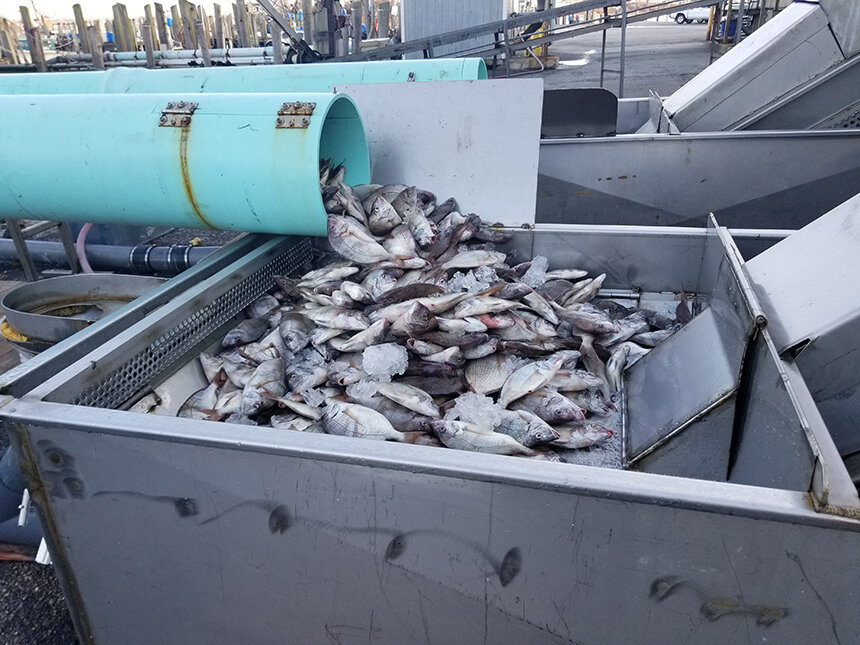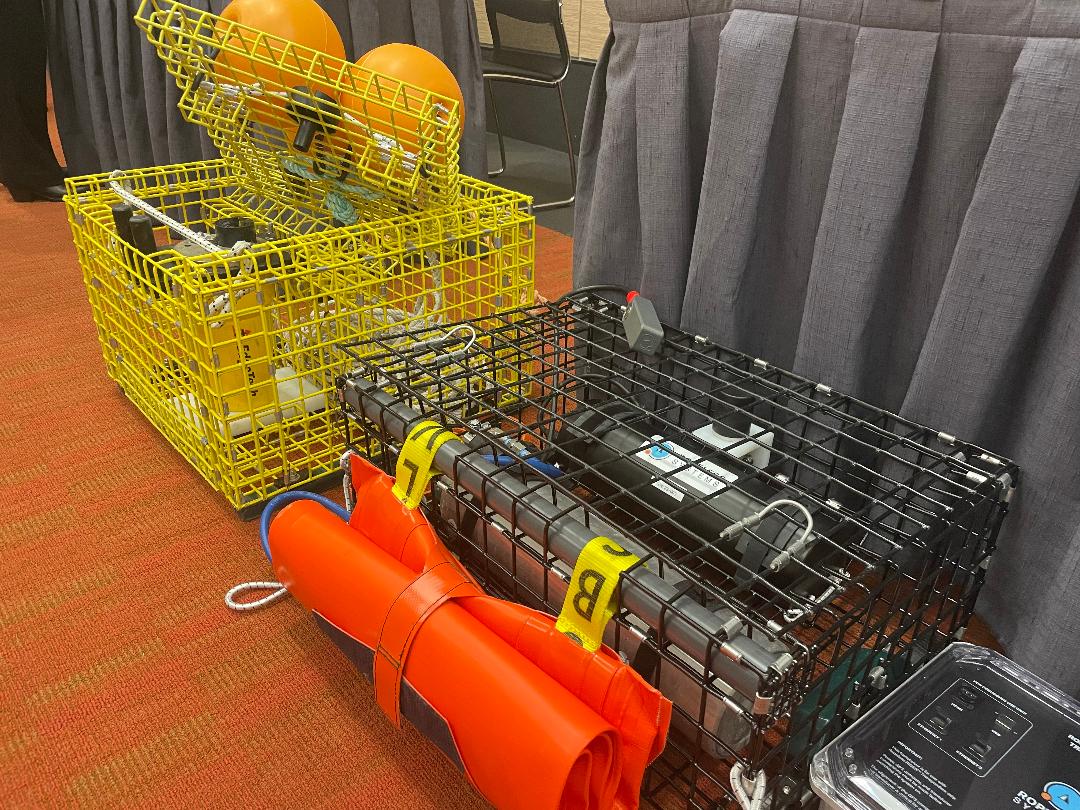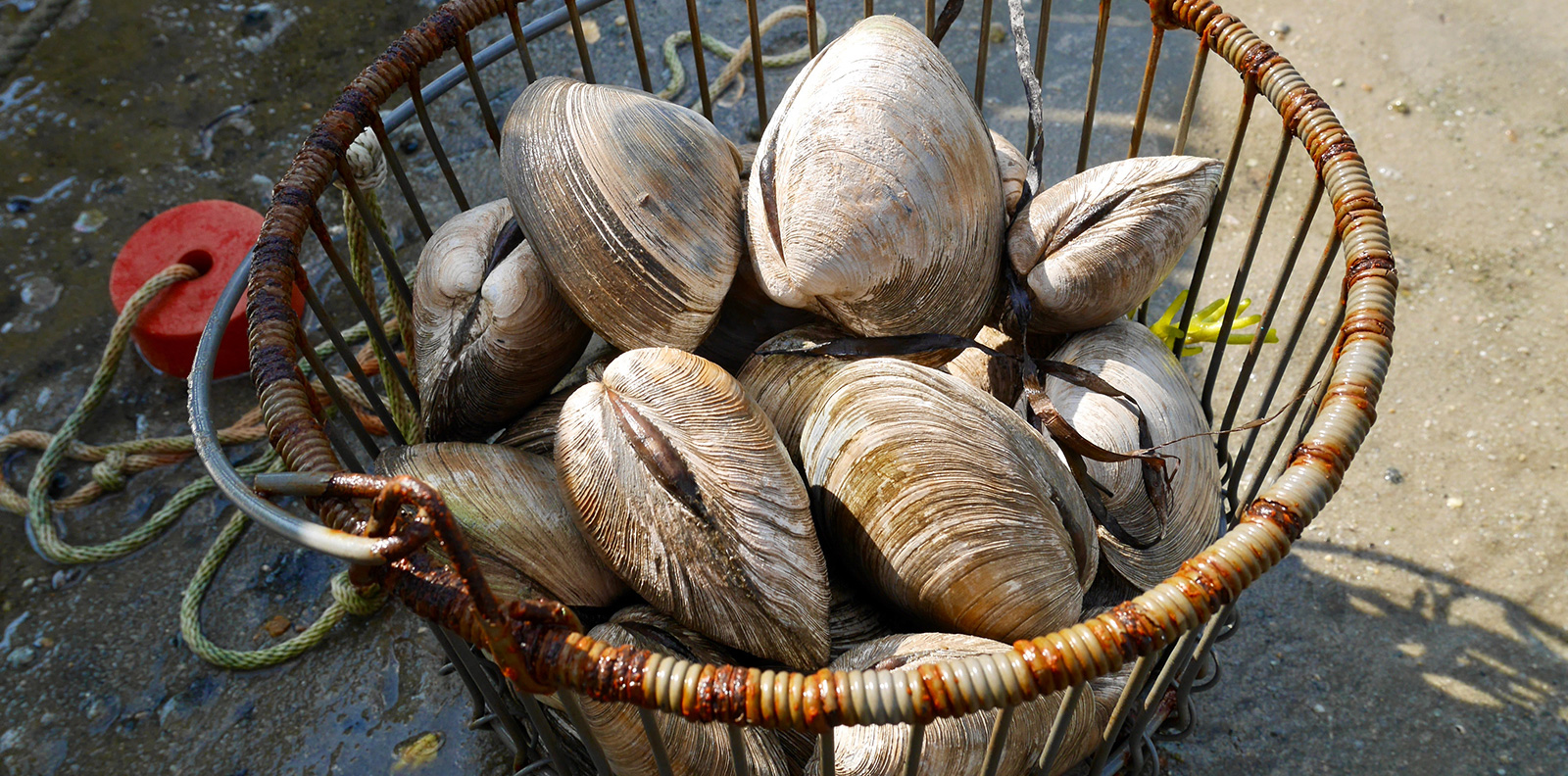Scup Project Works to Bring Little Fish to the Masses
June 25, 2020
The story of scup in Rhode Island — the underutilized little fish that has seen a growing push from the eat-local food movement — is hardly news. For years, educators at Johnson & Wales University have hosted scup dinners, organizations like Eating with the Ecosystem have promoted the porgy, local chefs have highlighted it on menus, and immigrants from West Africa, Central America, and Southeast Asia have hauled coolers to Point Judith to buy the fish straight off the docks.
But as awareness for this little fish has grown, the truth is, preparing a whole fish is still intimidating to most home cooks. In a consumer society where convenience is key, for better or for worse, most of the country likes its fish in neat fillets.
“What was a big challenge I think for the species was you have to buy it whole,” Johnson & Wales associate instructor and assistant dean Thomas J. Delle Donne said. “And buying fish whole becomes problematic unless your culture and your cuisine is used to cooking whole fish, which a lot of cultures are, but there are also a lot of households that looks for fish at Dave’s or Whole Foods or Stop & Shop that is cleaned and filleted.”
To bring scup to the masses — and, in the process, create demand for fishermen to catch the abundant fish — the Kingston-based Commercial Fisheries Research Foundation (CFRF) has partnered with Delle Donne and other chefs at Johnson & Wales and the Pier Fish Co. in New Bedford, Mass., among other organizations, to try to create a marketable scup fillet.
“It kind of started with scup as an underutilized species,” said Michael Long, a research biologist at CFRF who heads the scup project. “They’re currently sold primarily as fresh whole fish, so there’s not really any processing going on, there is some small-scale hand-filleting going on, but there’s not large mechanized filleting process.”
While many consumers may think that fish arrives at the supermarket whole, many fish are actually processed in large-scale facilities with machines specifically designed to scale, clean, and fillet all kinds of seafood products. These final cuts are then frozen and shipped out to be displayed on ice at fish counters and in bags stocked in grocery freezer aisles around the country and worldwide.
The processing and freezing of the likes of salmon, cod, and haddock has long been perfected, but smaller fish such as scup are new to the process and present a few challenges. The biggest one being large-scale filleting.
“It started out with trying to find the machine that can fillet scup, which was a challenge all in itself,” Long said. “The first project actually involved a salmon processor out in Michigan where we would land the fish in Rhode Island, ship them out to Michigan to get filleted, and bring them back here afterwards.”

Realizing the inefficacy of the Michigan route, project participants turned to the Pier Fish Co. The New Bedford seafood processor has experience filleting Acadian redfish, another small fish variety.
“They’ve adapted a fillet machine for scup from Acadian redfish,” Long said. “They have a similar body size and shape to scup, so there’s no more shipping them out to Michigan to get filleted and coming back here.”
The next puzzle in the process is freezing.
“Scup are relatively oily for being a white-fleshed fish and they have a really strong bloodline, so when you freeze them you get these strong flavors,” Long said. “We’ve tried a bunch of different freezing methods, from individual quick frozen to plate freezing, skin on, skin off, and changing cuts to get more of the bloodline out.”
As different freezing methods were tried, the frozen fish was shipped to Johnson & Wales, where chefs and their students would thaw them out, cook them, and relay the results back to CFRF.
“They kept hitting that wall of getting this really strong flavor no matter what Pier Fish was trying, up until February of this year where they tried vacuum sealing individual fillets, and that kind of has proven to be the thing that broke down that wall,” Long said.
While the vacuum-sealing method is promising, Long noted that they are still trying to find a way to mass-freeze larger quantities to make it easier for retail stores and fishmongers.
“Now we’re getting into larger batches, so when you send it to retail, the store or chef doesn’t have to slack out and thaw individual fillets. If it comes in a bigger pack, that’s a little bit easier to work with and more cost-effective way to go through the processing.”
When asked about the potential for scup fish sticks, Long said it’s not a totally out-there idea.
“That’s actually something we had looked into for smaller or larger fish,” he said. “When you’re making all of these cuts, if you have a fish that is a little bit larger or smaller, the cut isn’t perfect going through the machine. They take that and make these things called fish blocks, and that’s what a lot of fish that’s in frozen products like fish sticks are made from. So it’s something we have looked into.”



